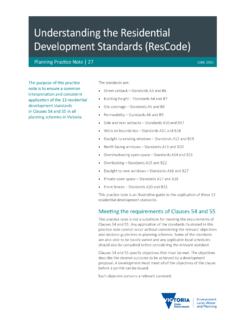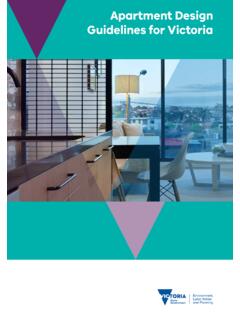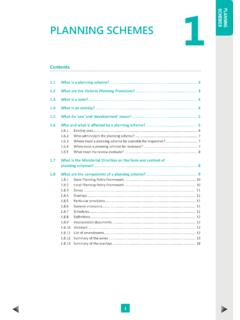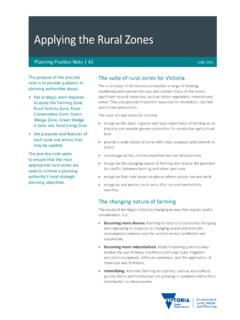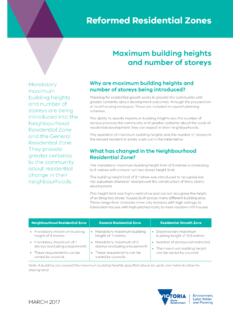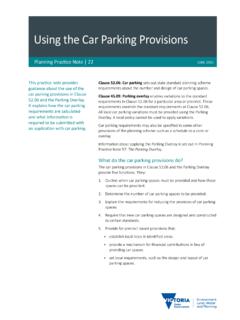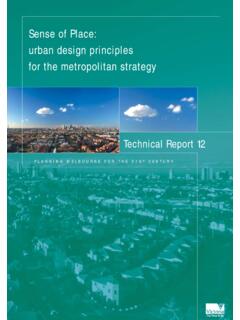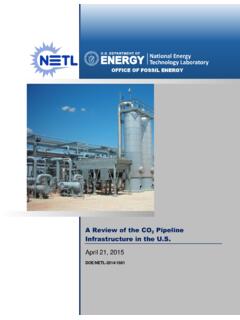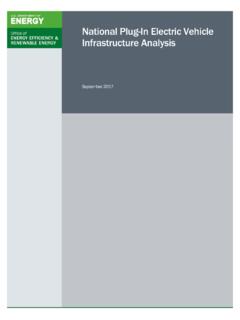Transcription of Population Projections 2016 to 2056 July 2019
1 Planning GroupVictoria in Future 2019 Population Projections 2016 to 2056 July 2019 The State of Victoria Department of Environment, Land, Water and Planning 2019 This work is licensed under a Creative Commons Attribution International licence. You are free to re-use the work under that licence, on the condition that you credit the State of Victoria as author. The licence does not apply to any images, photographs or branding, including the Victorian Coat of Arms, the Victorian Government logo and the Department of Environment, Land, Water and Planning (DELWP) logo. To view a copy of this licence, visit 978-1-7607 7- 663-3 (Print) ISBN 978-1-7607 7- 664- 0 (pdf/online/MS word)DisclaimerThis publication may be of assistance to you but the State of Victoria and its employees do not guarantee that the publication is without flaw of any kind or is wholly appropriate for your particular purposes and therefore disclaims all liability for any error, loss or other consequence which may arise from you relying on any information in this you would like to receive this publication in an alternative format, please telephone the DELWP Customer Service Centre on 136 186, or email or via the National Relay Service on 133 677, This document is also available on the internet at in Future 2019 Department of Environment, Land, Water and PlanningVictoria in Future 2019 Population and household Projections to 2056 Victoria in Future 2019 (VIF2019)
2 Is the official state government projection of Population and households. Projections are used by decision makers in government, business and the community to understand the growing and changing Projections are estimates of the future size, distribution and composition of the Population . They are developed using mathematical models and expert knowledge, relying on trend analysis and assumptions about future change. They should not be interpreted as exact predictions or forecasts of the about the future increases over longer projection horizons and with smaller geographic areas. Different policy settings and changes in the economy could result in changes to the expected size, distribution and composition of the on data sources and presentationEstimated Resident Population data are based on the latest available estimates from the Australian Bureau of Statistics (ABS) for 30 June 2018.
3 Household data are based on the results of 2016 Census and are only presented in detail for the base year 2016. In this document summary household figures may be quoted for 2018 and Population figures may be based from 2016 for consistency with household in Future 2019 Department of Environment, Land, Water and PlanningHIGHLIGHTS: VictoriaFigure 1 Past and projected Population by major regions, 1976 to 2056 Figure 2 Components of Population change, Victoria 2018 to 2056 Figure 3 Population by age group, Victoria 2018 and 2056 Figure 4 Households by type, Victoria 2016 and 2056 Department of Environment, Land, Water and PlanningHIGHLIGHTS: Local Government Areas5 Victoria in Future 2019 Figure 7 Top five Population growth, 2018 to 2036, Metropolitan and Regional LGAsFigure 5 Annual average rate of Population change, Regional Local Government Areas (LGA), 2018 to 2036 Fastest projected growth MITCHELL SHIRE ( ) - Projected to add 53,400 people by 2036.
4 -LGA crosses metropolitan/regional boundary. - 85% of growth in the 3% of land area within Melbourne s Urban Growth Boundary. Annual average growth raten 4% - 5%n 3% - 4%n 2% - 3%n 1% - 2%n 0% - 1%n <0%Annual average growth raten 4% - 5%n 3% - 4%n 2% - 3%n 1% - 2%n 0% - 1%Figure 6 Annual average rate of Population change, Metropolitan Local Government Areas (LGA), 2018 to 20366 Victoria in Future 2019 Department of Environment, Land, Water and PlanningDemographic assumptionsPopulation Projections rely on the cohort component model . This is driven by assumptions regarding the components of Population change: Net Overseas Migration; Net interstate Migration; Natural Increase (the difference between the number of births and deaths). See Figure 8 for historic and projected Overseas Migration has been Victoria s strongest driver of Population change in recent years, accounting for around 60 per cent of state growth.
5 Permanent migrants arrive under the skilled, family and humanitarian streams of the Commonwealth Migration Programme. Temporary migrants come under a number of visa categories including students and temporary business Projections assume continuing strong migration from overseas as Victoria remains attractive due to strong economic performance combined with education and lifestyle opportunities. Net Overseas Migration is expected to add between 70,000 and 80,000 people to Victoria s Population in each future has been gaining migrants, in net terms, from all other states and territories of Australia in recent years. The level of Net interstate Migration peaked at almost 20,000 in 2016-17. VIF2019 assumes more interstate migrants will come to Victoria than leave in the future.
6 Net interstate Migration is expected to account for growth of 8,000 people per Increase is dependent on three key factors fertility rates (number of children per woman), mortality rates and the number of people of different ages in the Population (the age structure).VIF2019 assumes Victorian women will have, on average, children over their lifetime. As the Population increases so does the number of births in each year. The number of deaths increases as the Population increases and ages, even though average Life Expectancy at birth is assumed to increase from 82 to 87 years by 2056 for males and from 85 to 88 for females. Natural Increase is expected to contribute around 40,000 people per annum to Victoria s future 8 - Components of Population change, Victoria 1986 to 20567 Victoria in Future 2019 Department of Environment, Land, Water and PlanningPopulation GrowthVictoria s Population was million at 30 June 2018.
7 It is the second largest state in Australia by Population , but has been growing by more than any other state or territory at up to 150,000 per annum (and at the highest rate of up to per cent per annum). Victoria has grown by a million people since 2011 and is expected to add another million by the official state projection, Victoria in Future presents a single series representing likely future growth, informed by current trends. This approach is considered the most useful for developing a common view to guide service and infrastructure planning. Under the VIF2019 assumptions Victoria is projected to add million people from 2018 to 2056, reaching a Population of million. This represents annual average growth of 125,000 people, at a rate of per cent per and trends may change in the future, however, and if other assumptions were used, different growth levels would result.
8 Migration levels are more sensitive to changes in policy or economic conditions than births or deaths. Figure 9 shows Population growth outcomes with different migration assumptions, illustrating average annual growth in each scenario, not the volatility of growth in individual years. This range of future populations does not represent alternative Victoria in Future projection series. It is presented to demonstrate that while Projections are sensitive to variations in migration assumptions, under a range of likely scenarios, growth is expected to be very strong, within a range of and million additional people by 2056. The official projection assumes average net migration (overseas and interstate ) of 84,000 per annum. This leads to a total net migration of million over 38 years.
9 Should Victoria prove more attractive to migrants, with net migration averaging 102,000 per annum, the Population could grow to million by 2056 at an annual average rate of per cent. This represents the higher end of the range in the chart. If average net migration were as low as 71,000 per annum, Victoria would grow at per cent per annum, leading to a Population of million by 2056 (the lower end of the range).Figure 9 - Projected Population , Victoria: range of outcomesABS EstimatesVIC2019 ProjectionRange of outcomes8 Victoria in Future 2019 Department of Environment, Land, Water and PlanningPopulation CompositionThe composition, or characteristics, of the Population can be just as important as the size or the growth rate. Places with the same Population size may require different services and infrastructure depending on the mix of ages and household median age in Victoria is 36 young by standards in the developed world.
10 Almost two-thirds of Victoria s Population is within the key working ages of 18 to 64 years, while fewer than one of every six Victorians is aged 65 years or over. (See Figure 10)By 2056 the Population will have aged significantly by proportions, particularly as the large baby boomer cohort moves into the oldest age group. The absolute numbers in the younger age categories are still expected to increase strongly. An additional 560,000 people are expected at school ages (5 to 17) by 2056, though this represents a smaller proportion of the total Population than this group did in at older ages, however, will increase greatly in both number and share. The number aged 65 years and over triples over the period and the number aged 85 years and over almost quadruples. By 2056 median age is projected to increase to number of households in Victoria is projected to almost double from to million from 2016 to 2056, but households are expected to be smaller.
